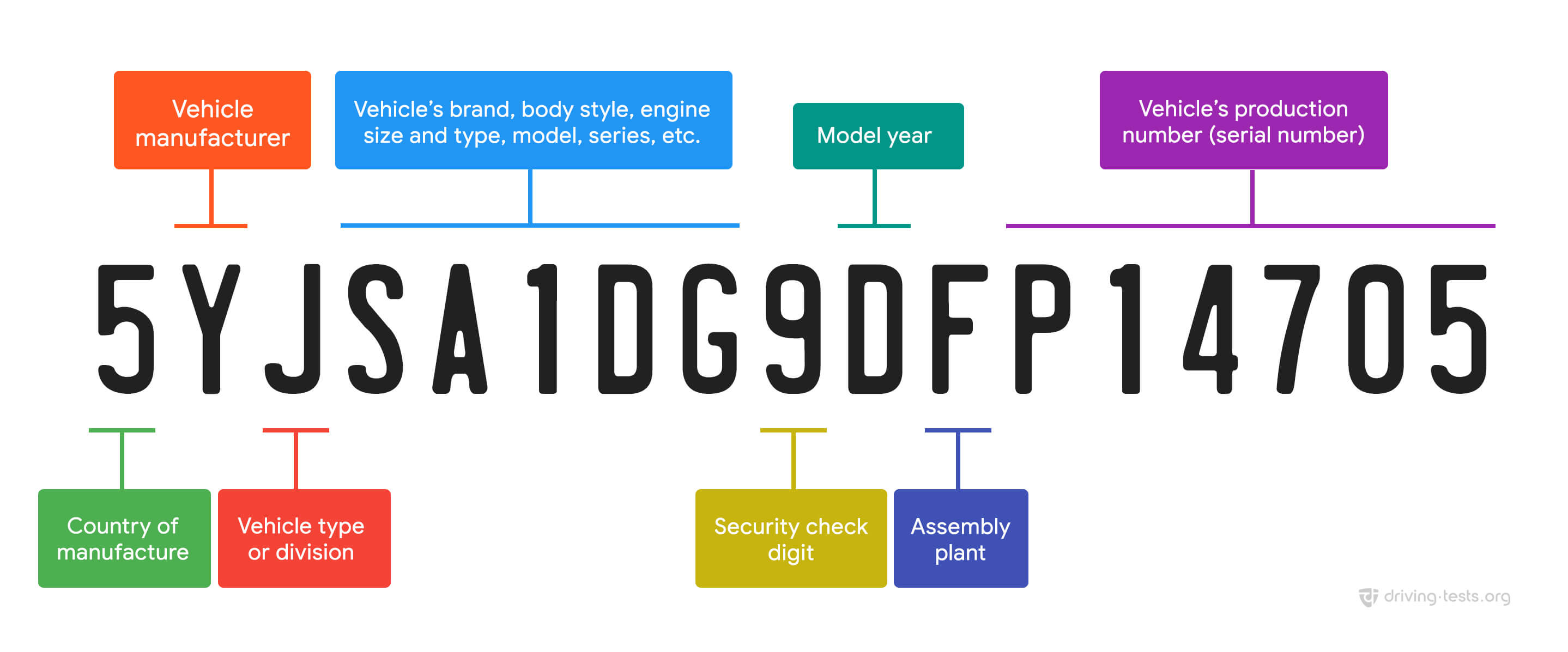How To Look Up A Car By Vin

So, you're ready to dive deeper into the fascinating world of vehicle information. You've probably heard whispers of the all-powerful VIN, or Vehicle Identification Number, and its ability to unlock a wealth of knowledge about any car. Well, you’ve come to the right place. This guide will equip you with the knowledge and tools to look up a car by VIN, understand the information you uncover, and apply it to your DIY projects.
Purpose: Why Bother Looking Up a VIN?
Before we get into the how-to, let's address the *why*. Looking up a car by VIN isn't just about satisfying curiosity; it's a crucial tool for a variety of situations:
- Repair and Maintenance: The VIN helps identify the exact year, make, model, engine, transmission, and trim level of a vehicle. This is critical for ordering the correct parts, accessing accurate repair manuals, and understanding specific service procedures. Imagine trying to replace a brake caliper without knowing if you have ABS or not!
- Pre-Purchase Inspection: Uncovering a vehicle's history – accidents, recalls, title issues – can save you from buying a lemon. A VIN lookup can reveal hidden problems or discrepancies.
- Learning About Your Car: Want to know exactly what options your car came with from the factory? A VIN lookup can tell you everything, from the original paint color to the installed radio.
- Theft Recovery: Law enforcement uses VINs to track stolen vehicles.
Key Specs and Main Parts of a VIN
The VIN is a 17-character alphanumeric code that's essentially a car's unique fingerprint. It's typically found on the dashboard (visible through the windshield), the driver's side doorjamb, the vehicle's title, and registration documents. Let's break down its structure:
- World Manufacturer Identifier (WMI) (Characters 1-3): Identifies the manufacturer of the vehicle. The first character indicates the region of manufacture (e.g., '1' or '4' for North America, 'J' for Japan, 'W' for Germany). The second character identifies the country within that region (e.g., 'F' for France, 'D' for Germany). The third character is assigned by the national authority to the manufacturer.
- Vehicle Descriptor Section (VDS) (Characters 4-9): Describes the general attributes of the vehicle. This section varies greatly depending on the manufacturer and can encode information about the body style, engine type, and model series. This section is manufacturer-specific.
- Vehicle Identifier Section (VIS) (Characters 10-17): This is the unique identifier for that specific vehicle.
- Model Year (Character 10): This character indicates the model year of the vehicle. There's a specific pattern to the letters and numbers used (e.g., 'A' for 2010, 'B' for 2011, 'C' for 2012, etc.). Note that the letters 'I', 'O', 'Q', 'U', and 'Z' are not used to avoid confusion with numbers.
- Assembly Plant (Character 11): Indicates the plant where the vehicle was assembled.
- Serial Number (Characters 12-17): A unique sequential number assigned to each vehicle produced by the manufacturer.
How It Works: Decoding the VIN
While you can technically decode parts of the VIN yourself using manufacturer-specific charts (often found online), it's much easier and more reliable to use online VIN decoders. These tools access databases that contain information associated with each VIN. Here's the general process:
- Find the VIN: Locate the VIN on your vehicle or documentation.
- Choose a VIN Decoder: There are many free and paid VIN decoder websites. Some popular options include the National Highway Traffic Safety Administration (NHTSA) VIN Decoder, Carfax, and AutoCheck. Be aware that free decoders may provide less detailed information than paid services.
- Enter the VIN: Type the VIN into the decoder on the website. Ensure you enter it accurately – even a single incorrect character will result in an error.
- Review the Results: The decoder will return information about the vehicle, such as:
- Year, Make, and Model
- Engine Type and Size
- Transmission Type
- Trim Level
- Factory Options
- Assembly Plant
- Vehicle History (Accidents, Title Issues, Recalls - *requires a paid service*)
Real-World Use: Basic Troubleshooting
Now that you can decode VINs, how can you use this knowledge in your DIY projects?
- Parts Ordering: Always verify the VIN when ordering parts, especially for critical components like brakes, suspension, and engine parts. Many parts suppliers will ask for the VIN to ensure you get the correct fit.
- Repair Manual Verification: Make sure the repair manual you're using corresponds to the exact year, make, model, engine, and transmission of your vehicle.
- Identifying Engine Swaps: If you're working on a modified vehicle, the VIN can help you determine if the engine is original to the car or if it has been swapped. This is crucial for diagnosing engine-related issues.
- Checking for Recalls: Use the VIN to check for open safety recalls. NHTSA's website allows you to enter a VIN and see if any recalls are outstanding for that vehicle.
Safety: Potential Pitfalls
While VIN lookups are generally safe, here are a few things to keep in mind:
- Privacy: Be cautious about sharing your VIN publicly online, especially on forums or social media. While the VIN doesn't directly reveal your personal information, it can be used to track your vehicle's history.
- Data Accuracy: VIN decoders rely on databases that may not always be 100% accurate. Always double-check the information with other sources, such as the vehicle's owner's manual or the manufacturer's website.
- Misleading Information: Be wary of VIN decoding services that promise to reveal *everything* about a vehicle for free. These services may be scams or may provide inaccurate or incomplete information. Always use reputable sources.
We've covered the basics of VIN lookup. It's a powerful tool for any car owner, but especially for those who enjoy working on their vehicles. Remember to use reputable sources, double-check the information, and be mindful of privacy.
